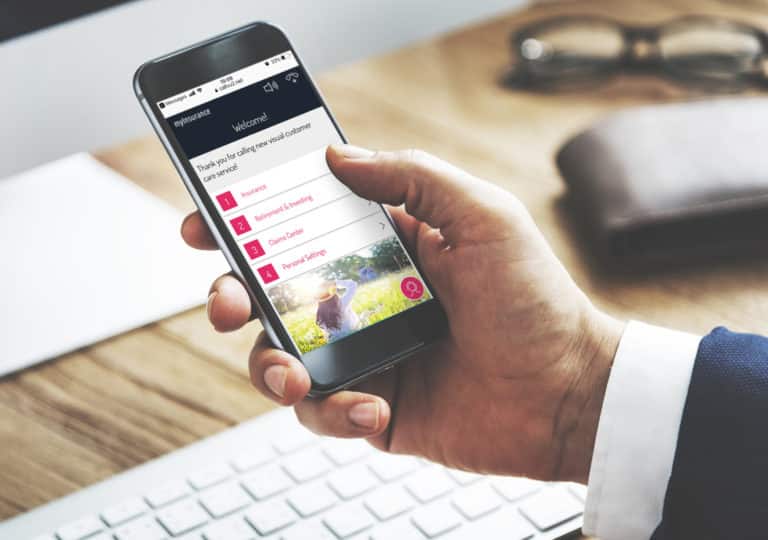Are you trying to identify new approaches to reducing average handle time (AHT?) Average handle time or AHT is one of the most important KPI metrics for a contact center. It reflects the three most critical components of a phone interaction with a support agent: hold time, talk time, and post-call follow-up time. It also provides rich insight into team productivity and the overall customer experience, and customer satisfaction delivered by a company.
Many contact centers use a similar set of best practices and service strategies to reduce AHT, increase team productivity, and grow overall customer satisfaction. But the one potent and often overlooked approach is applying automated CX to improve performance on this vital KPI. This post will summarize some of the traditional approaches to optimizing AHT and how to reduce AHT with CX automation.
First Things First: Calculating AHT
AHT is a relatively easy figure to calculate for a modern call center. Calculate the total number of minutes of hold time for a period PLUS the total minutes of call time for that same period, plus the total minutes of follow-up required post-call, and divide by the number of calls received during that period.
Higher AHT is generally associated with more complicated call center inquiries, understaffed contact center teams, and less productive contact center processes. Lower AHT is associated with positives like better-trained representatives, more efficient procedures, more modern software, and at capacity staffing.
Common AHT Reduction Strategies
Some of the most common ways that companies strive to reduce AHT are:
- Team Training: Better-trained representatives are more adept at answering questions quickly. This can cut both call length and the amount of time required for follow-up. It’s a great way to enhance knowledge management.
- Team Coaching: After agents train, it’s essential to keep them motivated and continuously improve their knowledge base. Coaching and ongoing training are effective ways to do this.
- More Comprehensive Knowledge Base: By investing appropriately in the resources available to agents to answer customer questions, you can make it easy to address customer questions and problems efficiently. That is a critical component of agent performance and a fantastic way to diminish customer frustration.
- IVR: Good interactive voice response helps clarify the customer’s needs and answers some of the most common low-value queries that do not require human intervention, like “what’s my balance.” It can be a great way to ensure that calls are routed to the right agent team for maximum efficiency. Unfortunately, IVR is not a panacea. After all, it is often difficult to navigate and dramatically increases caller irritation because it places an ill-conceived barrier between the caller and the agent team.
- Speeding Customer Greetings: For maximum efficiency, you want customer service teams to be pleasant and polite but goals-focused. A more efficient initial customer interaction sets the foundation for the most efficient call.
- Customer Journey Mapping and Analytics: Contact and call centers can be more efficient when their approach reflects the true journeys of customers throughout their customer life cycle,
- Online Chat: Chat reduces the number and cost of phone-based inquiries and can get customers answers to many of their questions more quickly.
- More Efficient Contact Center Software: Great software makes the knowledge base easily available and can help better route calls to individuals best suited to answer them.
Reduce AHT with Automated CX
Leveraging CX automation is a fast-growing arena for contact centers to reduce average handle time. Because there are so many facets to automated CX, it can sometimes be helpful to think about the various options in three broad categories:
Visual IVR
As we have already discussed, IVR is an almost ubiquitous technology that can — but does not always — improve average handle time. One increasingly popular strategy for improving IVR experience is deploying visual IVR for call diversion.
Learning research has revealed three broad classes of learners, visual, auditory, and kinesthetic. 65% of people learn best from visual stimuli, which has historically been a challenge for interactive voice response because it is audio-based.
With visual IVR, you offer the customer the option to complete tasks using forms and other interactive content. Typically, a platform sends a link to the customer via their smartphone. From there, the user can interact with menus and forms to more quickly outline their problem, submit information, and even get the answers they need without human interaction. Analytics can further enhance effectiveness over time.
Growing Usage in Top Industries
Leading companies in banking, insurance, lending, telecom, healthcare, and more are implementing visual IVR for many tasks. Broadly, visual IVR is most commonly used for call diversion. Still, it also has growing popularity as a means of sorting identity verification and data collection before the agent interaction and customer conversations.
FICX offers an outstanding visual IVR offering as part of its comprehensive “No-Code” CX Automation Platform. Our heritage is in the contact center arena, so we have ensured that our solutions for agent-assisted interactions are genuinely world-class. We also offer rich analytics to optimize your digital experiences continuously. If you’d like more information on this and other capabilities, please request a demo now.
Customer Self-Service
The broadest solution area is in customer self-service to enhance customer engagement. This moniker covers a comprehensive set of digital CX technologies designed to give customers the option of getting their needs and questions met without human interaction. By fully leveraging digital channels, digital CX offers robust solutions to enhance the overall customer experience. By taking people out of these customer interactions, companies can reduce costs, increase agent productivity, and improve the digital customer experience.
Mini Applications
Broadly, customer self-service often involves the use of mini-apps for common questions and tasks. Here the idea is to divert unnecessary low-value contact center calls. By creating mini-apps to answer questions about balance, payments, applications, application status, and the like, digital self-service can enhance customer support and even customer loyalty.
Automated Data Collection
CX automation can also help collect data in advance of an agent contact. For example, companies can provide the option to better use hold time by pre-submitting identity and other information so that agents have the data they need as soon as a call connects. One prevalent use case is enabling insurance customers to start the claims process with a digital form that collects details, photos, etc., so that all of that information is captured before speaking with an adjuster or agent. While it may seem counterintuitive that customers prefer self-serve digital customer engagement, they often prefer this digitally enabled process because it leads to first call resolution and accelerates speed to resolution.
Dynamic and Intelligent Interactions
Customer self-service experiences, when well integrated with a company’s internal systems for CRM and account management, can provide dynamic intelligent experiences that eliminate the need to enter already known data and customize feedback to the specific needs of the customer. While these dynamic experiences are sometimes pleasantly surprising to users, they will ultimately be table stakes for meeting customer expectations.
FICX is a leader in empowering organizations to create rich and satisfying customer experiences without the need to tax dev teams or add to the IT queue. Many leading companies are now leveraging our platform to quickly and cost-effectively deliver CX automation experiences in a fraction of the time. For specific insights on how we help reduce AHT with CX automation in particular industries, as well as address other CX opportunities, explore the following links:
We are also a popular solution for other customer experience automation use cases and industries.
Chatbots and Virtual Agents
Intelligent virtual agents leverage AI, speech/text processing, and machine learning to understand customer queries and needs. They provide answers without human interaction via customer experience automation. Years ago, chatbots were primitive — it was rare that a customer would be satisfied, much less pleased with, a chatbot interaction.
eMarketer published a story that outlined the reasons why customers are often frustrated with the output of chatbots:
Fortunately, advances in artificial intelligence and natural language understanding have dramatically improved the quality of responses and interactions available via chatbots. Over time, chatbots have delivered higher customer satisfaction because they function as genuine, intelligent virtual assistants. Great chatbots can now approximate social media interactions that are pleasing and satisfying to prospects and customers. They represent a highly cost-effective way to reduce AHT with CX automation.
Chatbots and RPA
As central elements of the robotic process automation (RPA) strategy, chatbots and virtual assistants can dramatically enhance efficiency. Companies have also learned that what customers ultimately want from a chatbot is speed-to-answers, not programmed pleasantries. What people want are answers, not ersatz human kindness.
By avoiding an unnecessary interaction with a contact center agent, chatbots can go a long way toward reducing costs, boosting sales rates, and optimizing the customer experience. They can also diminish repeat calls and interactions by getting customers complete — and correct — answers. Conversational AI is also driving further improvements.
Many organizations have already deployed live chat as an option for contact center interactions. Chatbots can be an excellent option for these companies because they can help customers get faster actions versus waiting for a human chat agent. Further, younger generations also increasingly demand 24/7 support and access through multiple devices. Often, chatbots are the only way for companies to deliver these attributes.
Conclusions: Act Now to Reduce AHT with CX Automation
Average handle time is a critical measure of contact center efficiency. CX and intelligent automation can enhance performance on this metric and boost other measures of customer relationship health like net promoter score and other objective metrics and benchmarks. In short, customer experience automation can have a positive and material impact on AHT. While perhaps not one of the traditional ways to reduce AHT with CX automation, it can be one of the most effective. Not only can you reduce AHT with cx automation from FICX, you can also leverage our toolset to meet all your digital customer experience project needs.
Consider FICX
As you explore your options for technology solutions for customer service automation, we encourage you to consider our Platform. FICX is reimagining the way leading brands digitally transform their customer experience. As a pioneer and a leader in no-code CX app development and automation, FICX empowers modern enterprises to rapidly digitize and automate CX journeys and deploy them anywhere they engage customers.
By removing friction from sales and service interactions with omnichannel last-mile experiences that are fully integrated with a company’s existing processes and systems, we help modern enterprises cut costs, convert more sales and keep their customers happy. Get more information on the FICX service suite now by visiting our website and requesting a demo.





